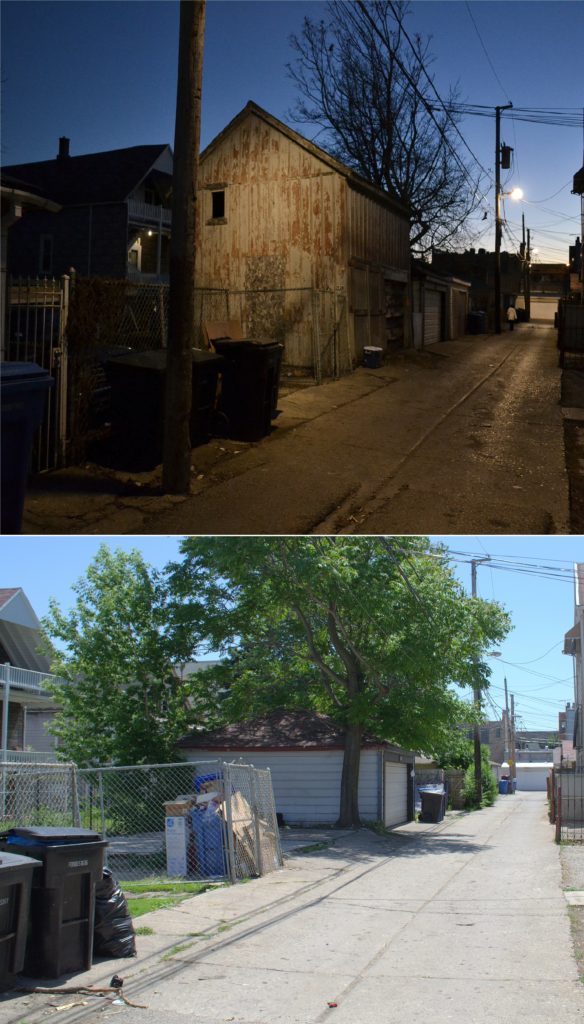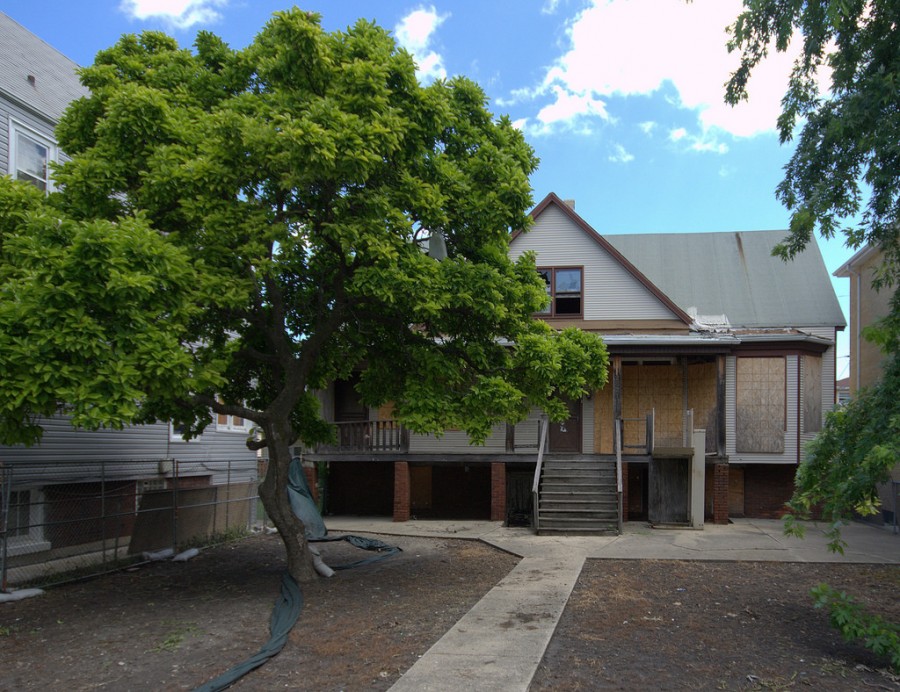Viewing all posts from the Avondale neighborhood
 John Morris
John Morris
September 4, 2017
The first part of this series looked at the early history of Milwaukee Avenue, and now we’re going to look at two related styles prevalent along the diagonal thoroughfare: the Chicago School and Sullivanesque.
Above is the Chicago School style, 1913 Holabird & Roche building at Milwaukee, North, and Damen.
The Chicago School (or Commercial Style) is frequently referred to as the architectural style that brought forth the earliest skyscrapers. This style was practiced by the firms of Louis Sullivan, Frank Lloyd Wright, Holabird and Roche, and Burnham and Root.
The Sullivanesque style evolved in the late 1890s, growing out of inspiration from Adler & Sullivan’s grand creations. Some of its early practitioners were former employees of Adler & Sullivan’s firm and went on to create landmarks and icons espousing the principles of the firm.
But by the 1920s, the Sullivanesque architectural style quietly morphed into to a regional design pattern, one of many choices for economical facade design.
Continue reading »
 John Morris
John Morris
July 4, 2016

Milwaukee/Kimball/Diversey [John Morris/Chicago Patterns]
Outside of Downtown, Milwaukee Avenue is likely the fastest growing and changing thoroughfare in the city, and it isn’t the first time in history it’s had this position. Since the early beginnings of Chicago, it’s been a busy commuting path and one of the most bustling commercial centers.
The beauty and lore of this avenue was captured over a century ago in a book by a Jefferson Park resident:
What Soho is to London this diagonal avenue is to the Garden City. By turns the Greek, Italian, German, Scandinavian, Russian, Lithuanian and Pole monopolize the street signs, the corner news-stands, the sidewalks and the cars, or proclaim to the passing nose one aspect of their national delicacies.
Every half-section line exhibits in its ganglia, as the crossing of the thoroughfares, a sharp-angled picturesque frontage, akin to Seven Dials or Five Points in their palmy days.
—Alfred Bull, amateur historian describing Milwaukee Avenue in 1911
In the first part of this series, we’ll look at the early history of Milwaukee Avenue, and follow it until the boom years of the 1920s. Next we’ll cover the Chicago School of architecture, and later, the transition to the Machine Age and Art Deco.
Continue reading »
 Gabriel X. Michael
Gabriel X. Michael
July 10, 2015

Site of 2934 North Wisner Avenue barn, circa 1880s, before (December 2012) and after (June 2014) demolition.
A former Gothic style barn or stable at 2934 North Wisner Avenue was arguably one of the oldest structures standing in the Avondale & Logan Square community areas, and was built when the area near Milwaukee and Kimball Avenues was farmland (adjacent to the famed Kimbell Farm founded in 1836), with a few residential structures.
Continue reading »
 Gabriel X. Michael
Gabriel X. Michael
July 24, 2014

Viewing east towards front facade of 2821 North Avers Avenue house under demolition. Gabriel X. Michael/Chicago Patterns
After some time on the city’s Demolition Delay Hold List, the review period has ended and demolition will be proceeding for the “orange-rated” house at 2821 North Avers Avenue. I recently visited one late afternoon to check on the site, and photograph the current state of the structure.
Looking into available public records, conflicting information exists regarding the actual age of this building: by all real estate-related and Cook County Assessor’s Office information that can be obtained, this house was built in 1908. However, the City of Chicago’s Historic Resources Survey–a ground-level, detailed effort completed nearly 20 years ago–also indicates this as a significant, “orange-rated” structure, circa 1880s.
Continue reading »




